![]()
Supporting every Minnesotan's ability to live well and age well
Long-term services and supports (LTSS) give flexibility and freedom
All Minnesotans deserve to do fulfilling work, connect with their community and enjoy a meaningful life. For people who need help with daily living tasks, LTSS can help at every stage. LTSS are a spectrum of health and social services that enable people to choose when and how they receive support.
This website describes the current status of LTSS in Minnesota and how it might change in the future.
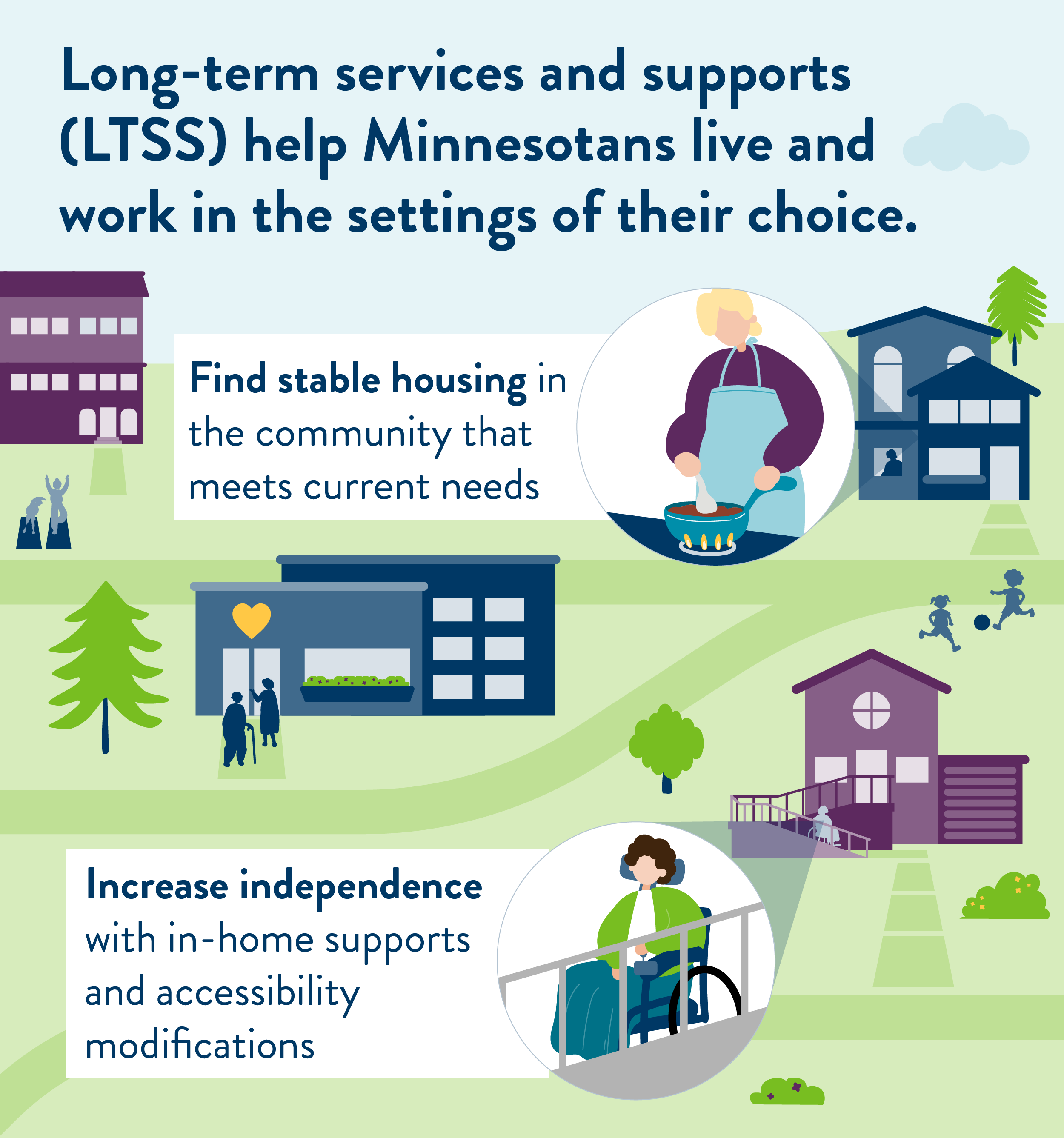
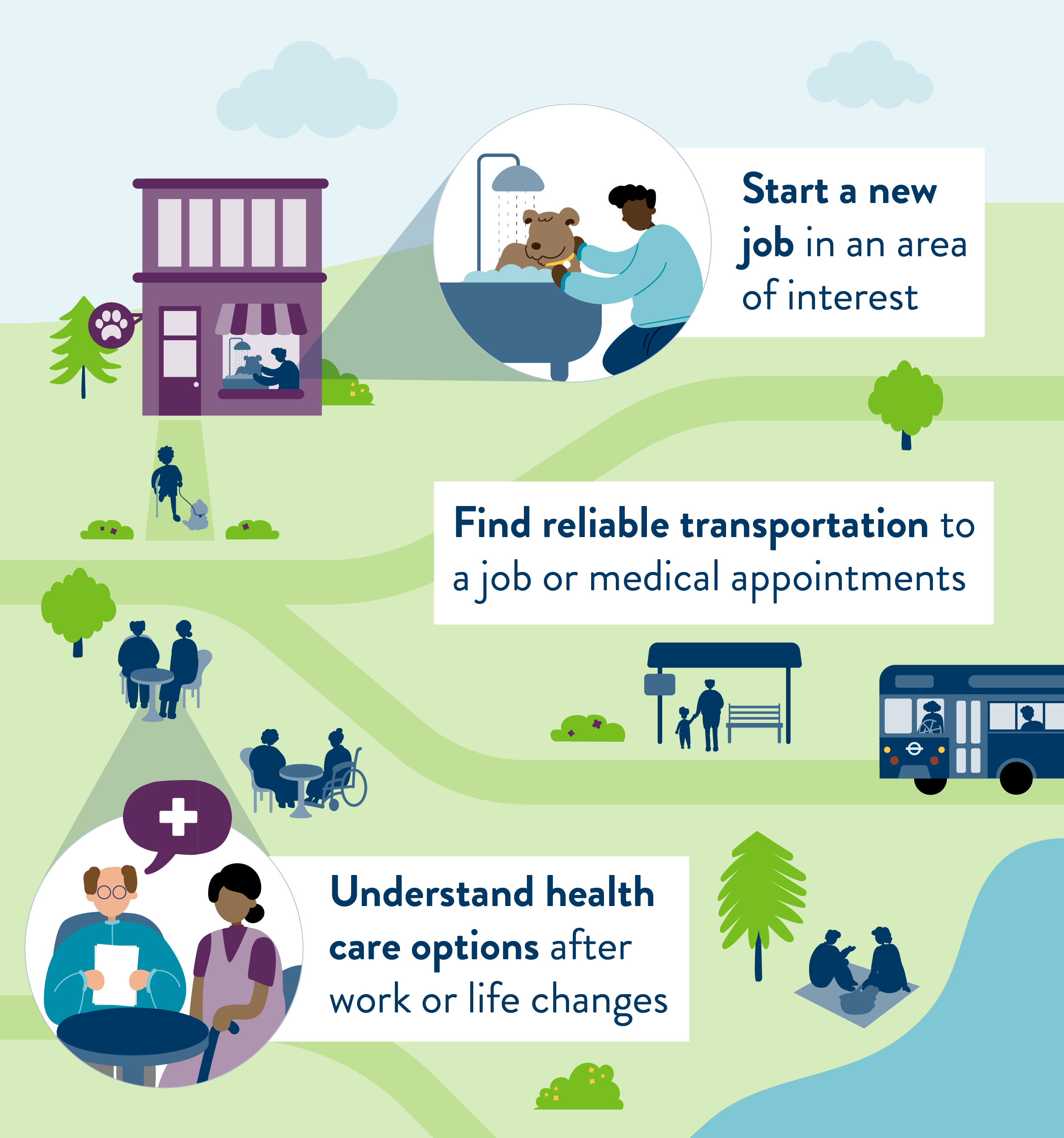
Long-term services and supports:
- Assist older adults and people who have long-term conditions or disabilities and their family, friends and neighbors caregiving.
- Support ongoing needs like personal or medical care; day-to-day tasks like housekeeping; and larger projects like finding a job.
- Provide services in the home, assisted living settings, nursing facilities and integrated settings that meet multiple needs.
LTSS includes services funded by Medicaid and other publicly funded supports, such as those funded by the Older Americans Act, as well as state or other legislatively appropriated funds. (In Minnesota, Medicaid is called Medical Assistance.)
As Minnesotans age, many of us will need LTSS that are not covered by Medicare. This is why planning for your future care needs, especially for how you will pay for them, is important.
Supporting all ages, life stages and backgrounds
An LTSS system is only successful if it works for everyone. The spectrum of services in Minnesota support people of all ages, disabilities and backgrounds.
To understand how LTSS can better support Minnesotans, the Department of Human Services collects demographic data such as age ,race/ethnicity, language and living situation. These tools also monitor how populations and services have changed over time to plan for future needs.
LTSS at home or in the community cost less than institutional care. This is one reason that many Minnesotans choose to receive LTSS at home or in the community.
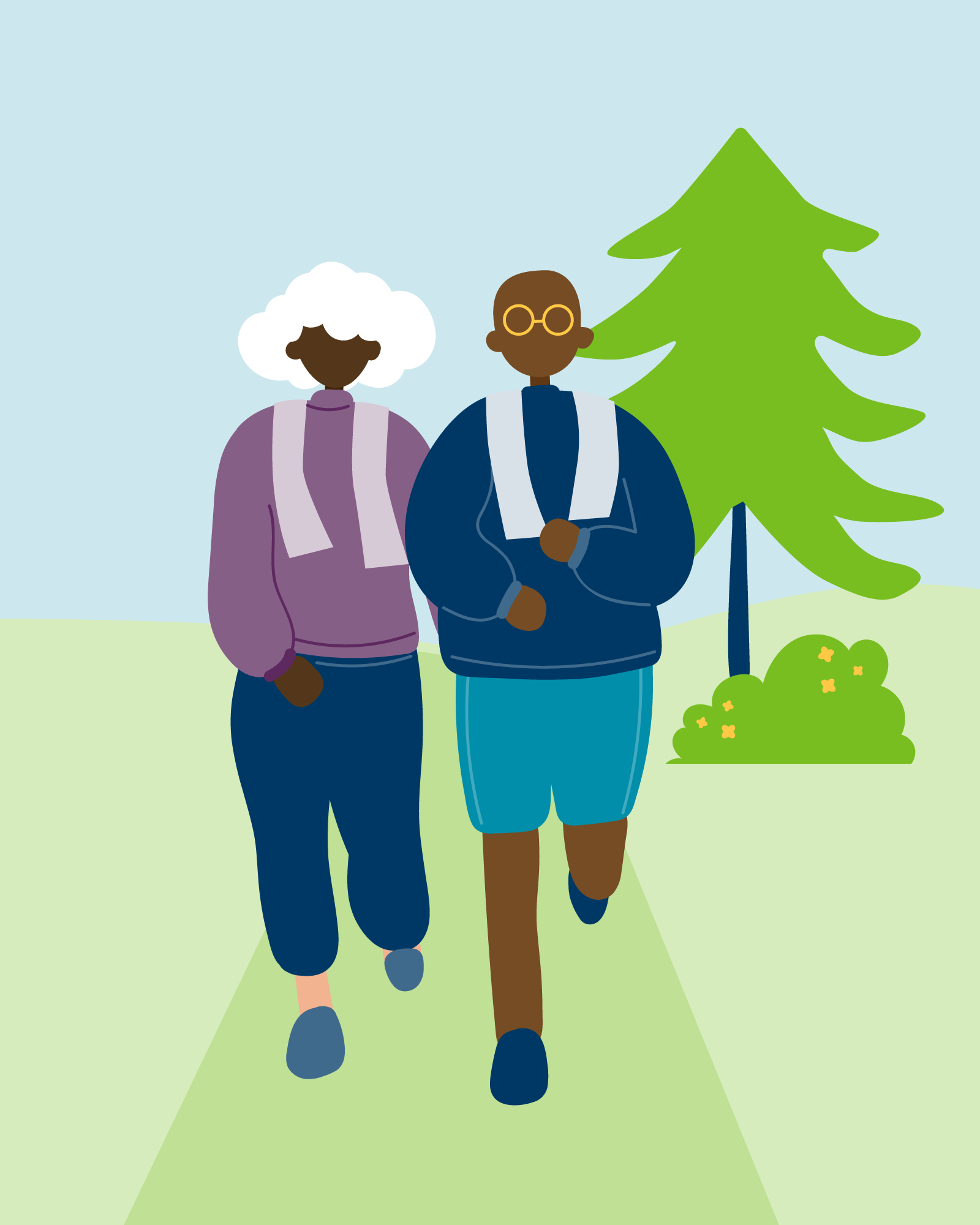
Data about aging in Minnesota
Data about all Minnesotans aged 65 and older. Charts show how demographics and services are changing over time at statewide, regional and county levels.
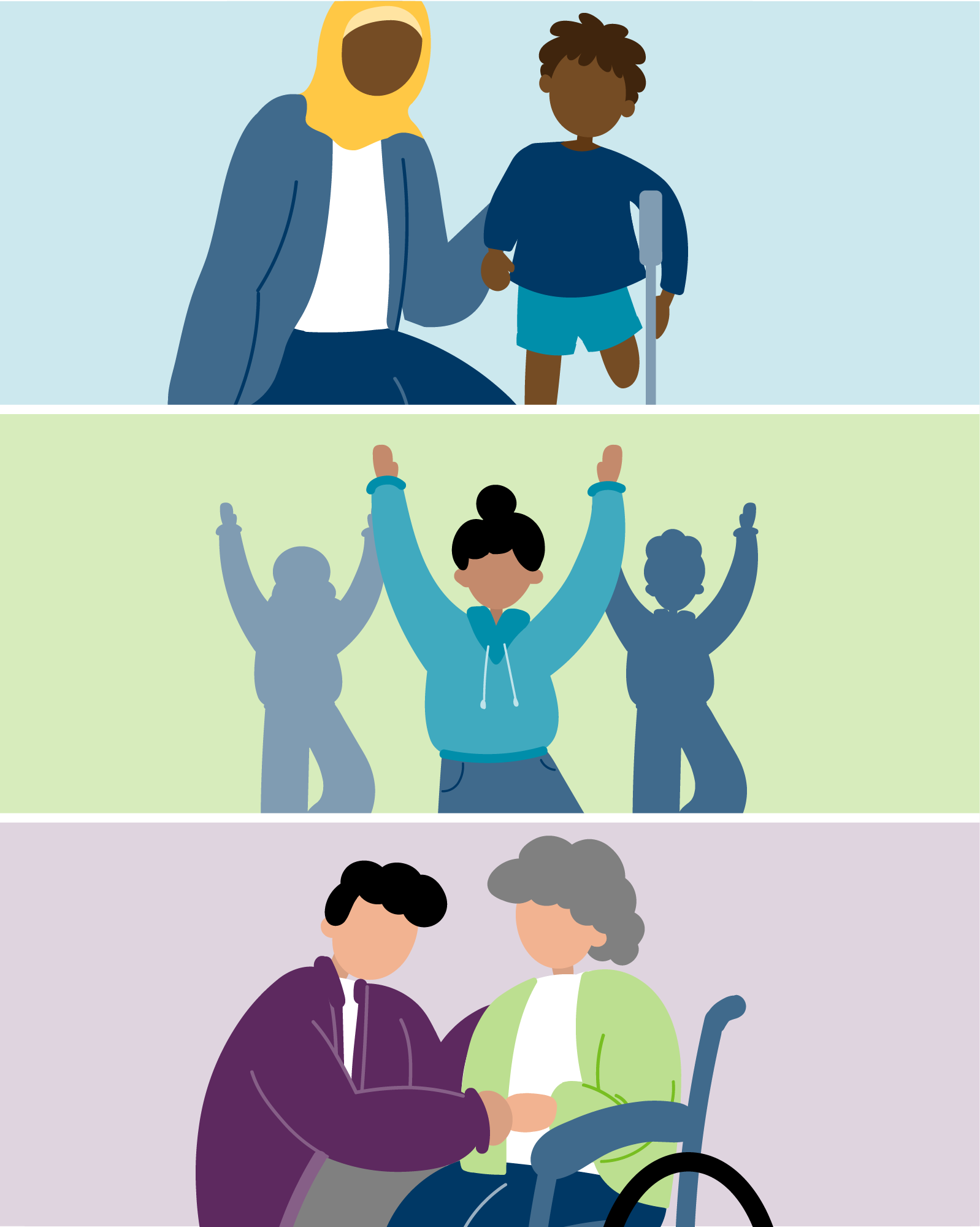
Data about people who use LTSS
Data about Minnesotans who receive Medicaid-funded LTSS. The dashboard compares demographics (age, race/ethnicity, language) to the overall Minnesotan population and shows how they are changing over time.
Success of LTSS in Minnesota
Over 800,000 paid and unpaid people across Minnesota work hard every day to provide LTSS for Minnesotans. Their efforts make an impact. Year after year, Minnesota is recognized for its supportive and well-integrated services.
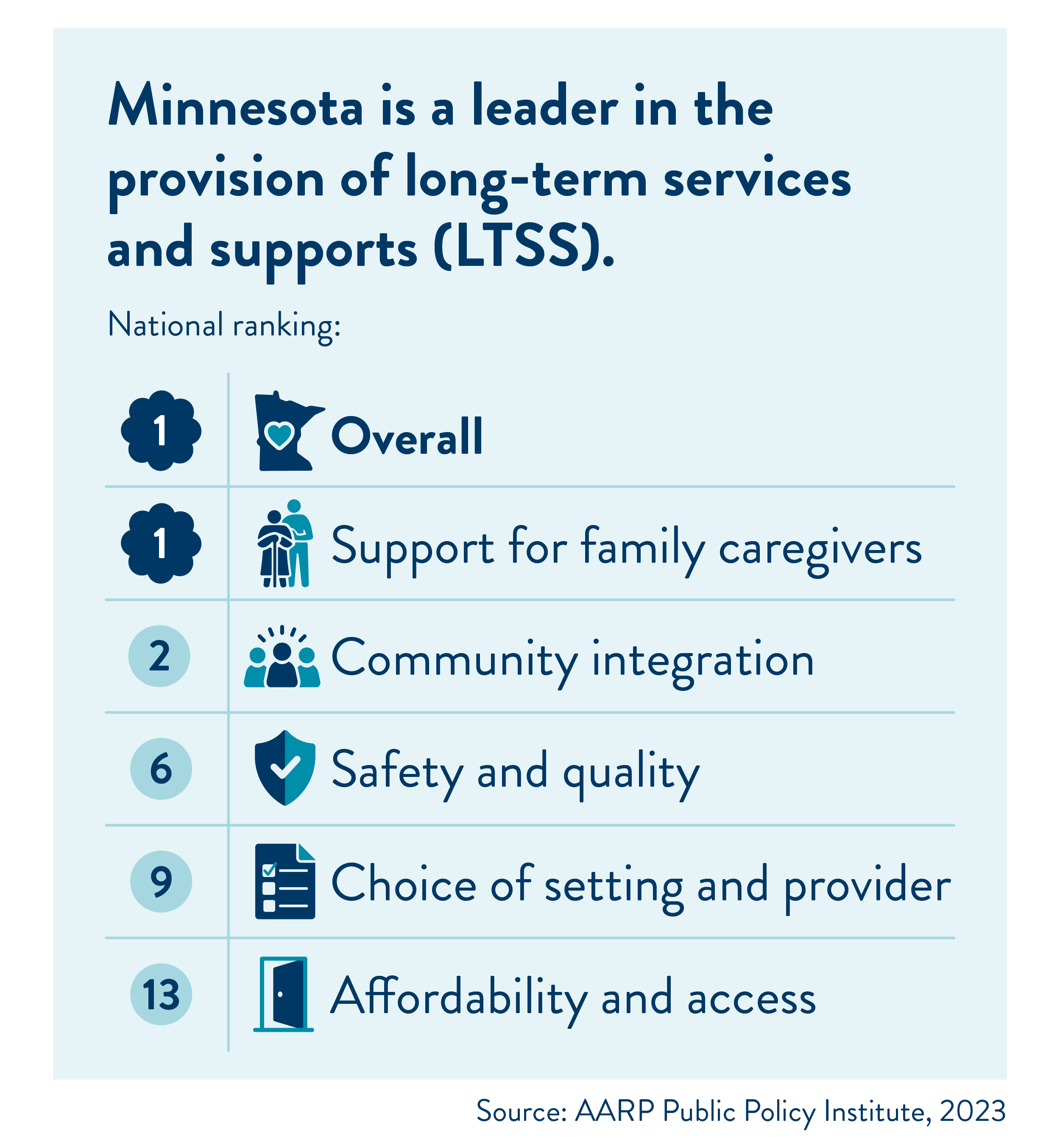
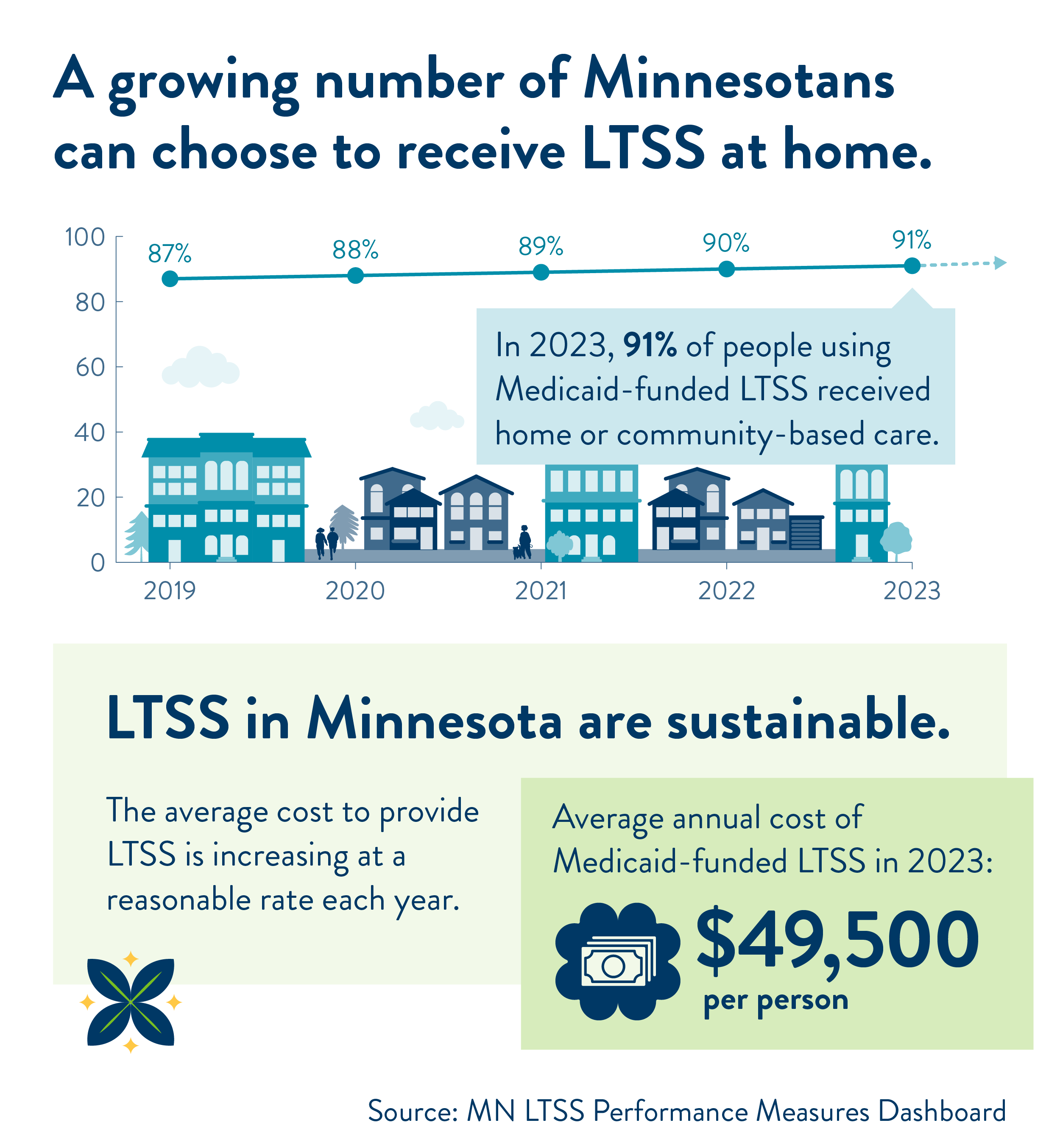
Looking to the future
Though the services are successful, there is always room to improve. Right now, many people are working on initiatives that will make LTSS in Minnesota more financially sustainable and easier to access. Others are advocating for laws and policies that will improve the quality of services people receive.
These efforts are guided by the people who might use our services, their families and their caregivers. Their perspectives help inform the future of LTSS.
This website fulfills the statutory requirement of Minnesota §144A.351.
